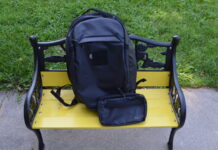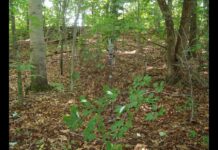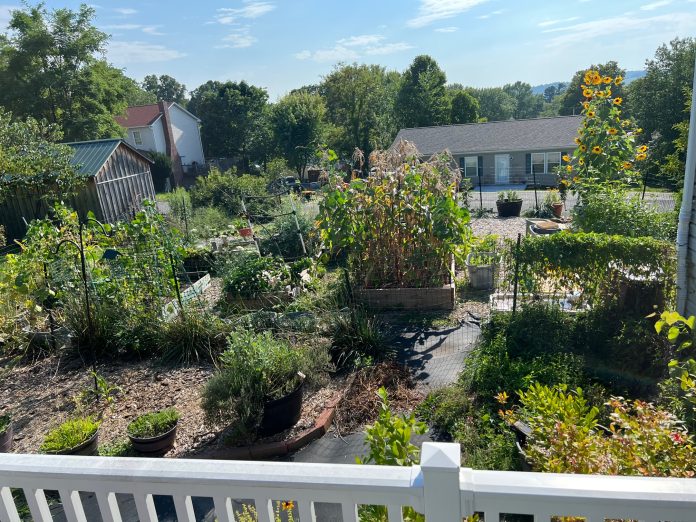
We’ve all seen online photos of someone else’s beautiful garden – neat rows, weed-free, and almost “manicured”. While part of me envies their visual feast, my own experience has shown that in some ways it is better to have a “messy” garden. Let me tell you why you should consider allowing your pandemic/survival/inflation garden to go its own way.
Continued Harvest
The first reason I have found it beneficial to not pull up plants immediately as soon as they are done producing abundantly is that some of them will give a second (albeit smaller) crop. Admittedly you might not want to do this if you have another succession crop planned for that space, but brassicas like broccoli and cabbage will give you additional food if you wait a bit.
After harvesting the main head, my cabbages will produce multiple small heads around the rim of the stalk if the root stalk is left in place. This gives me later season bitty cabbage heads that I can either chop into a stir fry or dehydrate for later use. It looks a bit unkempt, but I’m willing to overlook it if it gives me additional food.
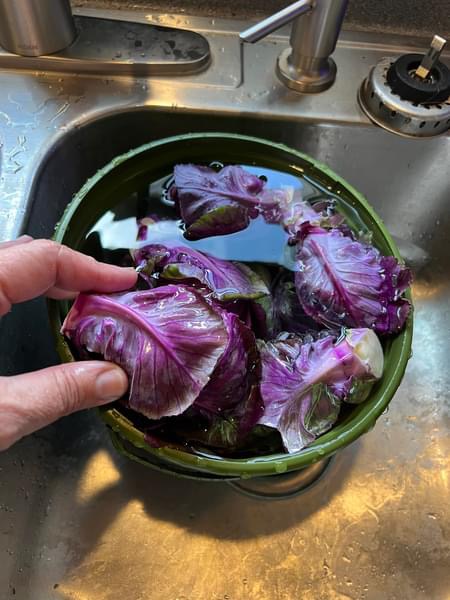
Broccoli will continue to produce little florets off of other stems even after harvesting the main center clump. These are also nice for stir fry or addition to a casserole. Meanwhile some of the florets go on to flower and produce seed pods, which the bees seem to love.
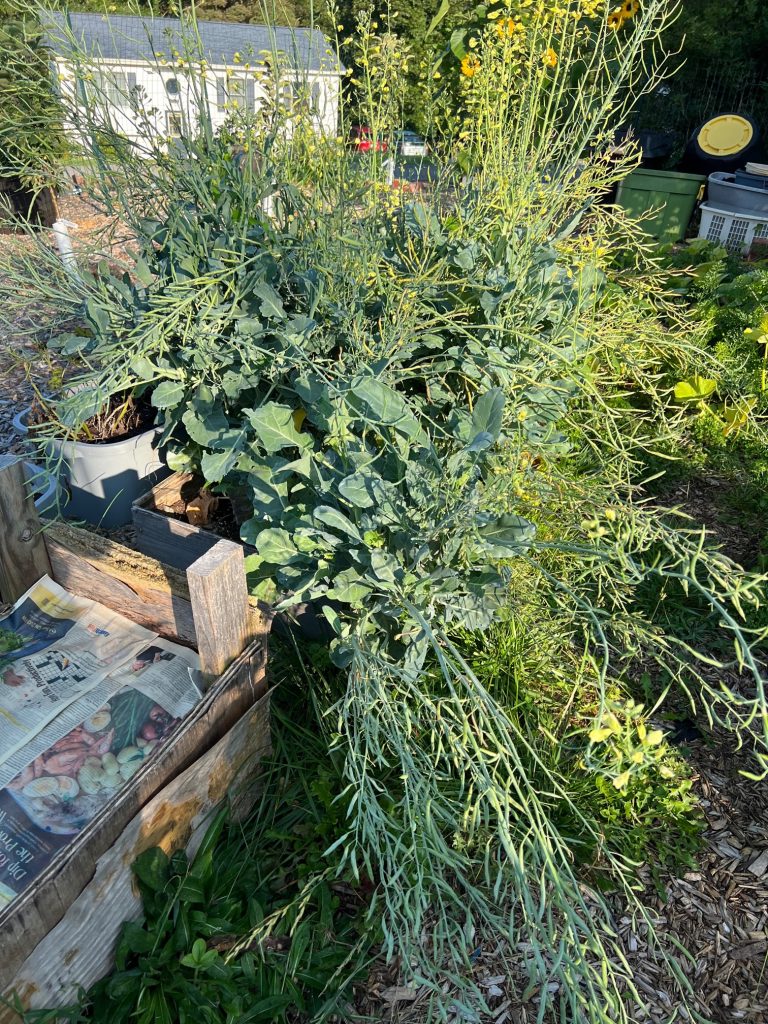
Corn, on the other hand will not continue to produce, but leaving the stalk standing gives the black beans a place to climb and pod-up. The bed again looks a little messy with the withering and browning stalks, but the neighbors haven’t complained yet, and I don’t have to bend over to harvest my black beans in the fall.
Don’t Jump the Gun
I don’t know if you have grown potatoes before, but in my experience you have to wait until the plant above ground withers and dies before you dig up your spuds. That leaves my garden tubs looking terribly neglected. But having a little patience and ignoring the decay can reap the reward of bigger, more delicious tubers come harvest time.

Volunteers and Free Seeds
If you have gardened in the same spot for more than a year or two, you may have noticed “volunteers” coming up where you never actually planted them. This is because if you have a few plants that have fully matured and gone to seed, the wind plants some for you without any effort at all. This is another side benefit of a messy garden.
Many garden fruits and vegetables are consumed well before the stage when the plant produces seed for next year. So if you harvest absolutely everything you will rarely get volunteers – unless maybe the birds do it for you. But leaving just a plant or two to go their own way will not only give you volunteers but also free seed for next year (but only if you grow non-hybrid varieties. Hybrids will not seed true – remember high school science?)
This was the way I got free carrot seeds last year. Carrots are biennial – they produce the yummy orange root the first year and the second year the plant draws energy back out of that root to flower and produce seed. I accidentally left a few in a tub over the winter and by spring they were flowering so I left them alone and collected the seeds. This year’s carrot crop is totally from that free seed! I LOVE free food!
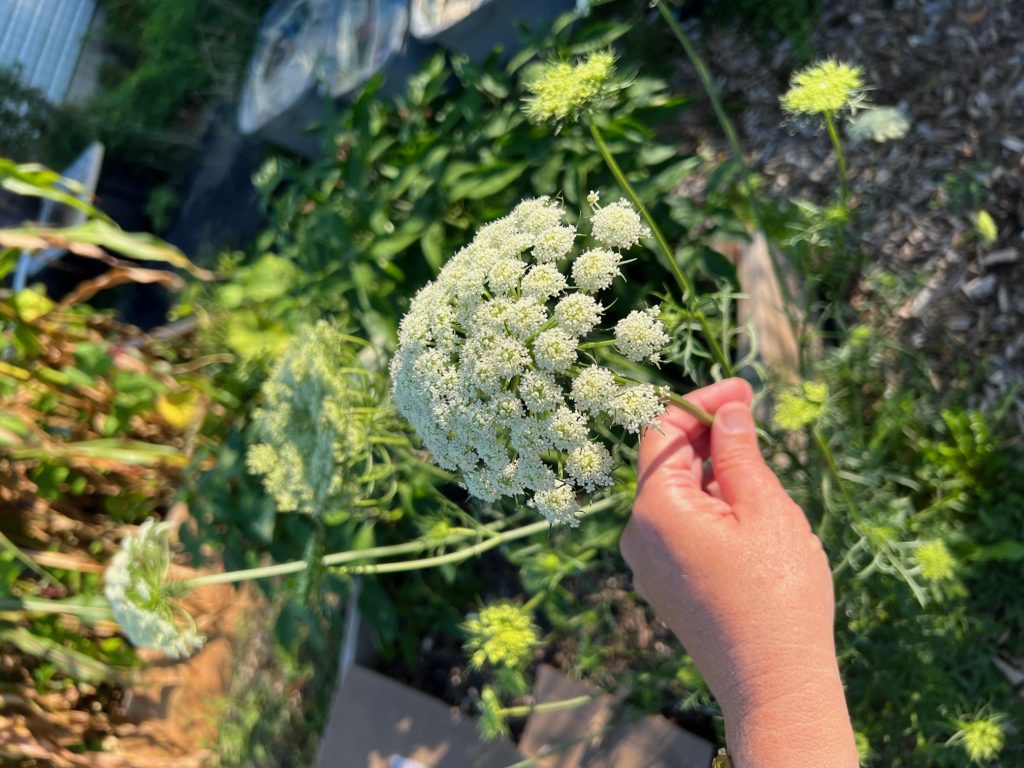
I let the broccoli go to seed this year just to see, and holy cow! I had no idea that broccoli produced seeds pods after flowering, but here I am with not only happy bees from the flowers, but now I have literally thousands of seed pods for next year. Do you need any – I could probably mail them.
I also have a volunteer carrot from last year that is seeding this year – because I didn’t pull up all the “weeds” in the mulch between the beds. Now I’ll have free carrot seed again – precisely because my garden was messy. I also have gotten volunteer dill and volunteer thyme this year – because of wind-seeding and the fact that I didn’t pull up the “weeds” growing from the mulch.
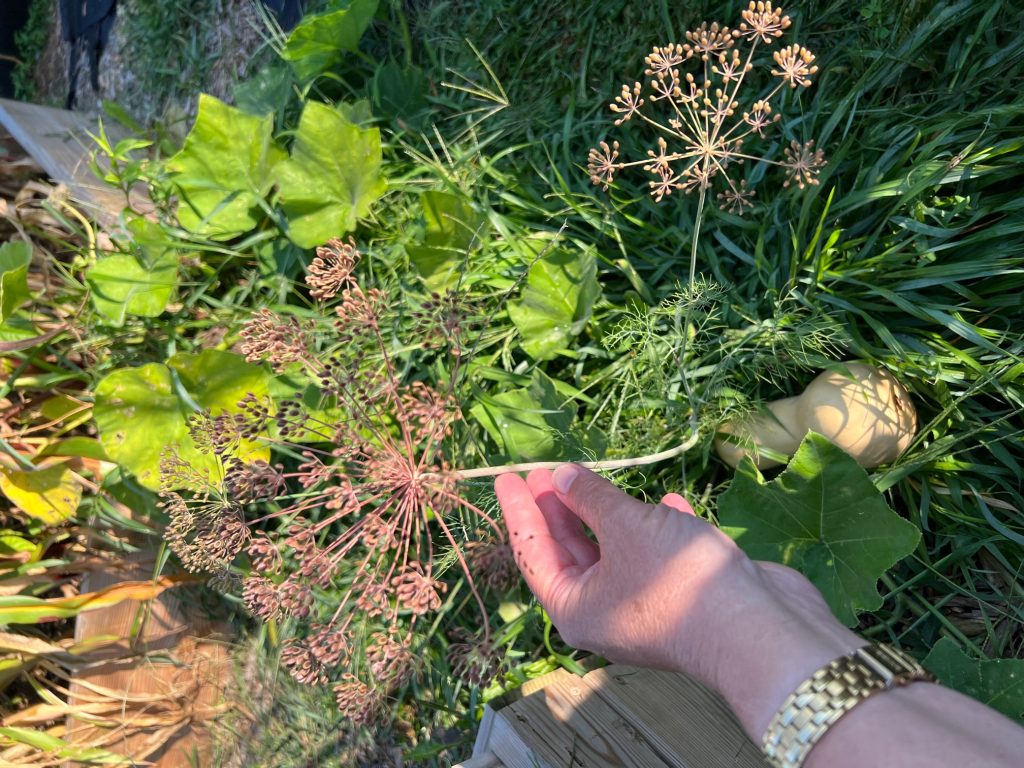
“Weeds”
Speaking of weeds, there are other reasons you might consider being judicious with which “weeds” you pull from your garden.
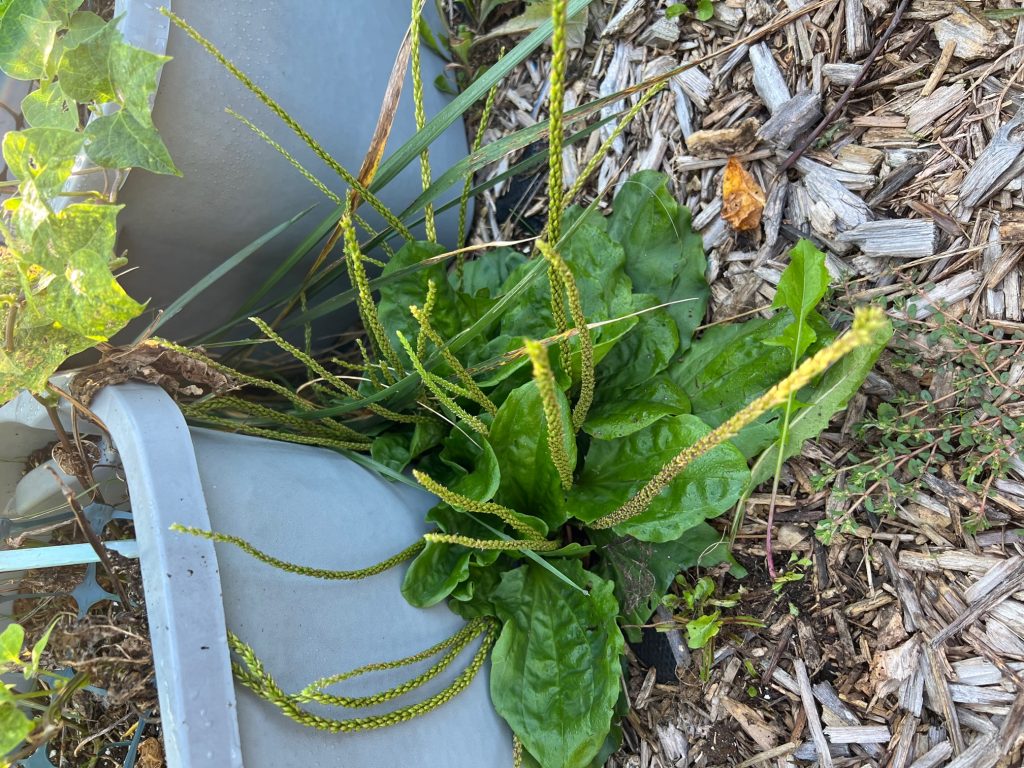
My mulch between the beds this year is growing not only the standard edible dandelion, but also other edibles like Wood Sorrel and Broadleaf Plantain. If you’ve ever foraged in your yard for fresh greens, now you’ll have them right in your garden. Your paths might look a little disheveled, but free food is free, and these days that’s nothing to sneeze at!


